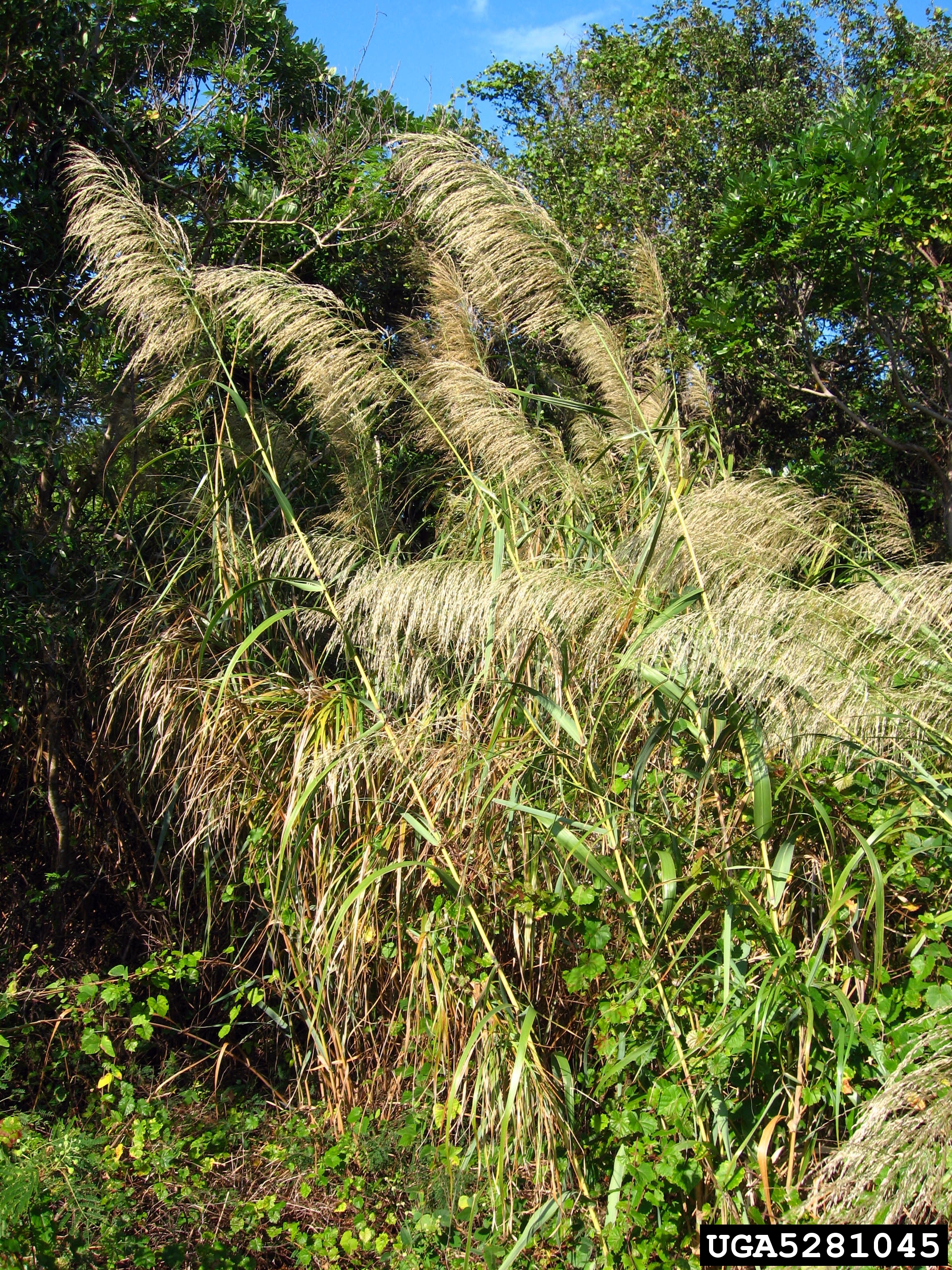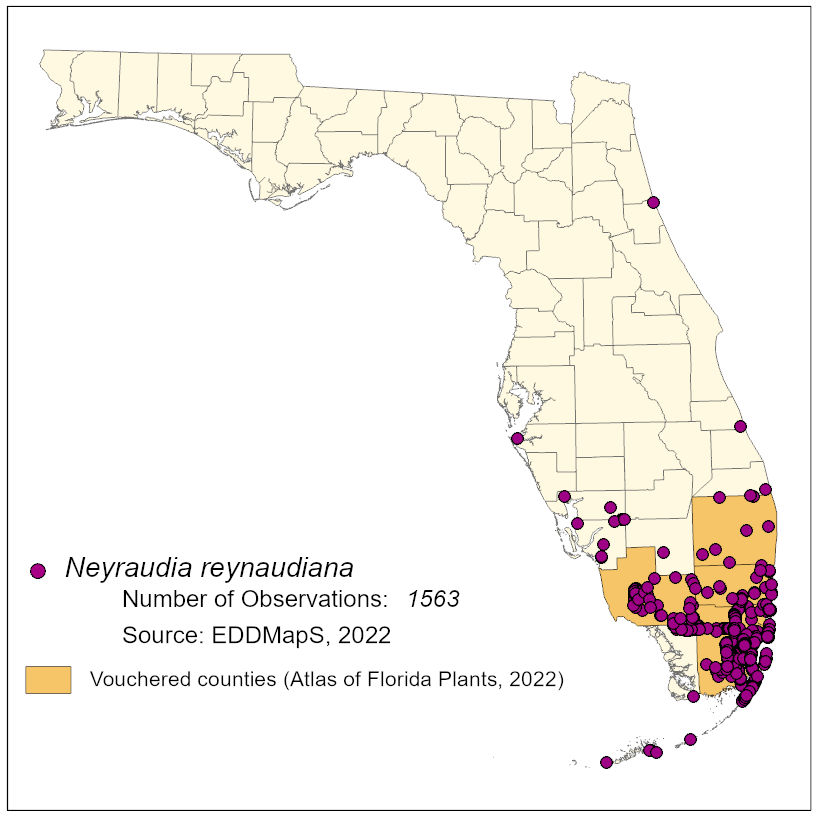Common Name: Burma reed
Family: Poaceae
Common Synonyms: Arundo zollingeri
USDA Hardiness Zone: 9a, 10a-11b
Growth Habit: Perennial grass
Origin: South Asia
FISC Category: 1
FDACS Listed Noxious Weed: Yes
Introduction Date: 1916
IFAS Assessment:

.jpg)
Robust, reed-like perennial clumping grass to 3 m tall. Short rhizomes. Leaves linear, flat or inrolled, to 100 cm long, with hairy ligule, hairy above, glabrous below, and smooth or rough margins. Inflorescence a large feathery nodding, terminal panicle that is finely branched. Spikelets slender-awned.
Variety of habitats, pine rocklands, disturbed areas
Similar in appearance to the native, Phragmites australis.

Note: Remove seedheads before treatment to reduce follow-up needs.
Langeland, K.A., H.M. Cherry, C.M. McCormick, K.C. Burks. 2008. Identification and Biology of Non-Native Plants in Florida's Natural Areas-Second Edition. IFAS Publication SP 257. University of Florida, Gainesville, Florida.
Langeland, K.A., J.A. Ferrell, B. Sellers, G.E. MacDonald, and R.K. Stocker. 2011. Integrated management of non-native plants in natural areas of Florida. EDIS publication SP 242. University of Florida, Gainesville, Florida.
Wunderlin, R. P., and B. F. Hansen. 2008. Atlas of Florida Vascular Plants (http://florida.plantatlas.usf.edu/).[S. M. Landry and K. N. Campbell (application development), Florida Center for Community Design and Research.] Institute for Systematic Botany, University of South Florida, Tampa.